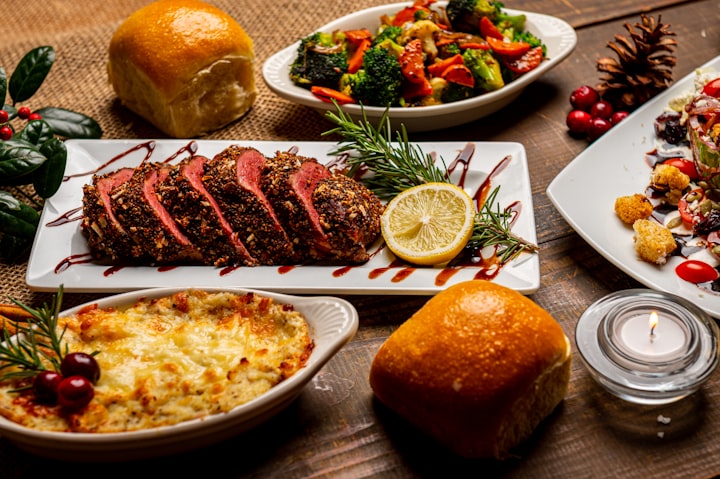Forgotten Christmas Traditions from History
We should bring back some of these Christmas traditions

Christmas traditions have become beloved hallmarks of the annual holiday. Candy canes, caroling, putting cookies out for Santa Claus and opening bright presents all connote Christmas.
Many of these North American traditions are from Victorian England, when Queen Victoria’s beloved husband Prince Albert brought German Christmas customs to the United Kingdom, which were then transported to other parts of the English-speaking world.
For example, the popularity of the Christmas tree—which was then dangerously lit with candles — was because of Prince Albert’s influence. Before the nineteenth century, historians believe the Christmas tree tradition belonged exclusively to the Germanic world and originated from pagan beliefs. Only after the young royal family was sketched standing next to a Christmas tree at Windsor Castle in 1848 did other Britons follow suit.
Like the wildly popular Christmas tree, most of these traditions survived the chaos of the twentieth century. However, others, from both England and around the world, have been almost completely erased from the popular consciousness.
Singing for Extortion

Victorian England was extremely poor.
While period dramas often romanticize the era by solely depicting “respectable” gentlemen and powdered ladies, writers like Elizabeth Gaskell and Charles Dickens exposed the profound and often inescapable poverty faced by most members of British society.
Because of the strict class division inherent to Victorian society, most people were unable to gain social mobility. The poor had to find other less favourable ways to support their families.
Groups of carolers, often comprised of impoverished people, would sing for money rather than for the simple purpose of spreading holiday cheer. However, the audiences they sang for were usually forced to donate funds while being threatened or made to feel guilty. As Thomas K. Hervey, author of The Book of Christmas, complained in 1888:
A very curious part of the business, however, is, that these people actually expect to get money for what they are doing! With the most perfect good faith, they really calculate upon making a profit by their outrages upon men’s feelings! It is for the purpose of “putting bread into their mouths” that those mouths are opened in that portentous manner.
Apparently, carolling for money was such “a grievous public wrong” that Hervey advocated for legislation to ban the popular custom.
Wassail Bowls

An essential ingredient for the perfect Victorian Christmas party was the wassail bowl, which was meant to spread cheer during the entire Christmas season.
The word “wassail” is derived from the Old English word for “good health.” The wassail bowl was prepared for carol singers who happened to visit a family’s home, providing warmth and nourishment to those who might have resorted to extortion.
According to Thomas K. Hervey, the ideal wassail bowl used the following ingredients:
It should be composed, by those who can afford it, of some rich wine highly spiced and sweetened, with roasted apples floating on its surface. But ale was more commonly substituted for the wine, mingled with nutmeg, ginger, sugar, toast, and roasted crabs.
Lord of Misrule

In European courts during the Middle Ages, Christmas was a celebration lasting months.
In preparation for the holiday, nobles would appoint a comical figure called the “Lord of Misrule” to decorate the castle or manor and oversee all Christmas festivities. The position was also derived from earlier Roman traditions, where an individual was assigned to lead amusement during specific festival times.
The Lord of Misrule was not an imaginary position but a real position at court. Therefore, the Lord of Misrule had real political power for three months of the year.
Because the Lord of Misrule was responsible for playing pranks and making all kinds of mischief, the tradition was eventually banned when the Puritans — the morally legalistic followers of a specific brand of English Protestantism — came to power.
A Glass Pickle

The glass Christmas pickle has become the subject of controversy in recent years. Many sources have questioned the strange origin story of the German Christmas tradition, which isn’t very well-known in Germany anymore.
Regardless, the tradition is still considerably popular among descendants of German immigrants from years past.
The Christmas pickle was always the last ornament to be hung on the Christmas tree. Some have suggested the decoration was not an ornament, but a real pickle. On Christmas morning, the first child to find the pickle among the green branches of the tree would receive a prize.
One of the most interesting origin stories attributed to the Christmas pickle focuses on a hungry Bavarian prisoner who begged his guard for something to eat while he was in jail. Fortunately, the guard took pity on the prisoner by giving him a single pickle — an act of kindness the man commemorated by hanging a pickle decoration on his family’s Christmas tree.
John Kunering
Despite being deprived of freedom and subjugated to appalling horrors at the hands of their enslavers, enslaved people in the Americas also found some enjoyment in Christmas traditions.
Harriet Jacobs, the enslaved woman who fled North and became an active abolitionist and strong advocate for other enslaved people, remembered one of these Christmas traditions in her 1861 autobiography:
Every child rises early on Christmas morning to see the Johnkannaus. Without them, Christmas would be shorn of its greatest attraction. They consist of companies of slaves from the plantations, generally of the lower class. Two athletic men, in calico wrappers, have a net thrown over them, covered with all manner of bright-colored stripes. Cows’ tails are fastened to their backs, and their heads are decorated with horns. A box, covered with sheepskin, is called the gumbo box. A dozen beat on this, while other strike triangles and jawbones, to which bands of dancers keep time. For a month previous they are composing songs, which are sung on this occasion.
Historians have since interpreted the Christmas tradition as a form of resistance.
As described by Jacobs, the enslaved men would sing and play music similar to the musical traditions employed by West Africans during warfare. Songs performed by enslaved people also contained double meanings protesting the horrors of slavery using biblical imagery. While white onlookers might have viewed the tradition as harmless Christmas amusement, it likely invoked calls for resistance and freedom.
The Feast of the Donkey

The “Feast of the Donkey” was a special twelfth-century feast day in France remembering the journey of Mary and Joseph into Egypt to escape King Herod’s efforts to kill Jesus. Other plays throughout Europe commonly celebrated Jesus’s miraculous birth by having people act out the nativity scene — reminiscent of modern nativity plays.
In a tongue-in-cheek manner, the festival commemorated the donkey who was described in Latin as “very beautiful and brave.” The most beautiful girl in the village was selected to represent Mary and rode through the town on a wooden donkey to a pretend Catholic mass in the church. The assembled congregation would reply to the priest with donkey noises instead of saying “amen.”
Despite its somewhat bizarre and humorous nature, the feast was also a solemn affair as it reflected upon the difficult escape of Jesus’s earthly family to Egypt, which was ultimately facilitated by a donkey.
About the Creator
Ilana Quinn
I am a student who loves writing about history, travel, faith and life experiences. Feel free to check out more of my writing at https://linktr.ee/ilanaquinn :)







Comments
There are no comments for this story
Be the first to respond and start the conversation.